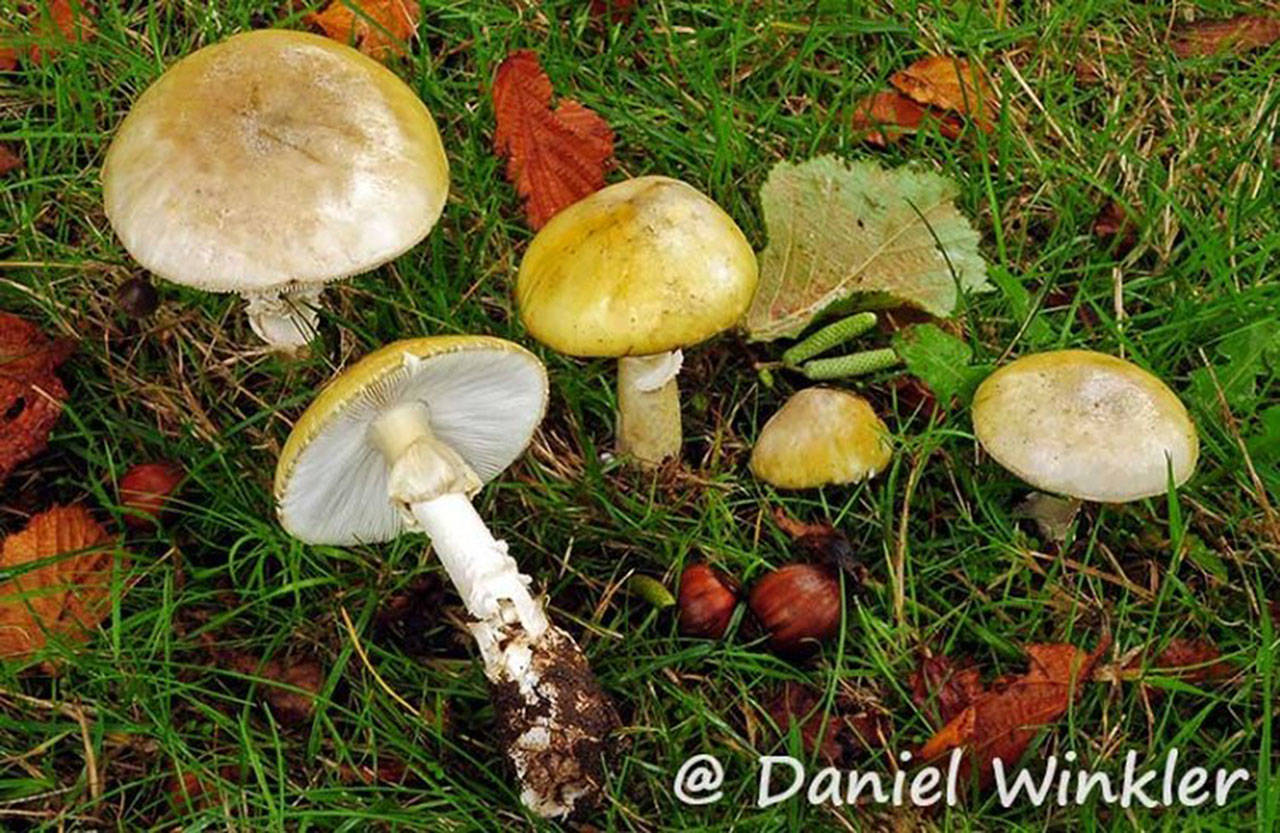Watch out, mushroom foragers. Fall rains bring blooms of Amanita phalloides, better known as the death cap mushroom. They are common in Western Washington, and were found recently on the University of Washington Seattle campus. The death cap mushroom has no distinctive odor or taste and resembles other nontoxic varieties. Consumption of the Amanita mushroom causes most of the deaths from foraged mushrooms worldwide.
SIGNS AND SYMPTOMS OF DEATH CAP MUSHROOM POISONING:
Death by death cap typically begins with severe vomiting, abdominal cramps, and diarrhea that comes on about 6-24 hours after ingestion. Other symptoms may occur, including but not limited to headache, dizziness and coughing. Typically, the symptoms clear up and the poisoned person feels better for a day or so. But the poisonous amatoxins inside the mushroom are at work and 3-5 days after ingestion the person can experience liver, kidney and other organ failure, and death. There is no antidote for poisonous mushrooms.
If you experience symptoms after eating wild mushrooms, call the Washington Poison Center at 1-800-222-1222.
Amatoxin is not killed by cooking/heat. The lethal dose can be tiny, and a single mushroom can contain enough poison to kill multiple adults.
The death cap mushroom may look like other, non-poisonous mushrooms that the forager is familiar with either locally or internationally.
HOW TO FORAGE FOR MUSHROOMS SAFELY:
Only eat foraged mushrooms if you are 100% certain of the species. Amanita phalloides is not the only poisonous mushroom growing in our region and there are other mushrooms that can cause severe illness and death. The safest thing you can do is to have your mushrooms examined by a mushroom expert or “mycologist.”
The Puget Sound Mycology Society and Washington Poison Center recommend that mushroom foragers take the following steps when foraging for any wild mushroom:
- Always be 100% certain that the mushroom is safe to eat.
- Only eat a small amount when trying a new type of mushroom. Keep a sample and take a photo of the mushroom, in case you become sick later.
- Only try one type of mushroom at a time – and wait 24 hours for any reactions.
- Only eat mushrooms that are in good condition. Do not forage where there may be chemicals on the ground, such as a lawn or a golf course.
- Always cook your mushrooms thoroughly but know that heat does not kill amatoxins.
- Do not assume the mushroom is safe just because you saw another animal eating the mushroom. The Washington Poison Center reports that rabbits, for example, can safely eat the death cap mushroom while in humans the death cap causes liver poisoning.
For more information visit the Washington Poison Center, and the Washington Mycological Society


